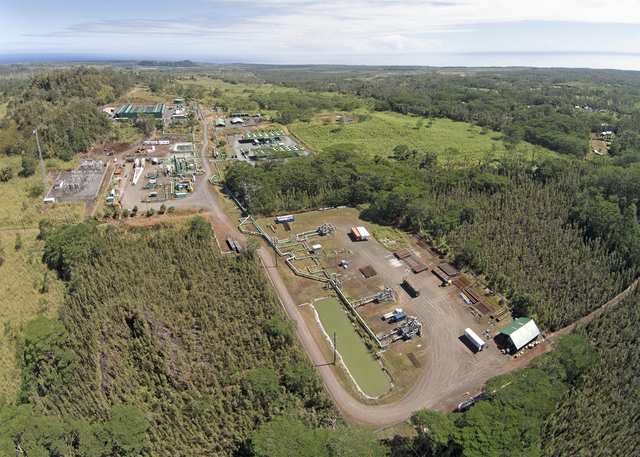Hydrogen sulfide readings taken during two recent steam releases at Puna Geothermal Venture were too low to be considered a public health risk.
But not everyone is convinced there was no danger.
“I think Civil Defense was broadcasting there was nothing, there was no injury to anybody … And it’s not true,” Puna resident Sarah Steiner told Hawaii County Council members Tuesday.
She was one of a handful of testifiers during the Public Safety and Mass Transit meeting who complained about the releases at the Kapoho-area plant, claiming some nearby residents felt ill afterward.
In a letter to the editor, Sandra Baker, who said she lives next to the plant, said there was an “awful smell” at her home during one of the releases that gave her daughter a headache and made her dog appear nauseous. She said a pet rabbit died that night after foaming at the mouth.
“So, when I hear that all is OK with the (PGV) plant, I am here to say that it is not,” Baker said.
A Fire Department hazmat team and Hawaii County Civil Defense responded during the releases as protocol requires.
According to Civil Defense, the highest readings from fence line and hand-held monitors during the releases were 15 parts per billion of hydrogen sulfide Sept. 29 and 8 ppb Monday.
The plant’s air permit limits fence line hydrogen sulfide readings to 25 ppb on an average hourly basis.
The Occupational Safety and Health Administration limits workplace exposure to 10,000 ppb and considers levels to be immediately dangerous at 100,000 ppb.
Civil Defense said there was no public safety risk based on those readings. Agency spokeswoman Kanani Aton said Civil Defense received a few complaints from residents who said they felt ill, which were forwarded to the state Department of Health.
PGV spokesman Mike Kaleikini said no workers at the plant were harmed by the releases, which he said were “well below” regulatory levels.
The releases occurred in response to “high-pressure conditions” as a result of control malfunctions, Kaleikini said.
Bob Petricci, a Puna resident who uses a hand-held hydrogen sulfide monitor provided by Civil Defense, said he suspects another chemical might have caused people to feel ill. He also thinks existing fence line monitors are inadequate.
Petricci said a smell that reminded him of an oil refinery made him feel nauseous as he was taking readings near the plant Sept. 29. He said he did not detect any hydrogen sulfide at that time.
Kaleikini said he joined Petricci at the spot after he called him.
“There were some odors,” he said. “I couldn’t identify it. I would say it was not strong. It reminded me of someone’s barbecue.”
Kaleikini said he couldn’t think of anything from the plant that would cause that odor.
Email Tom Callis at tcallis@hawaiitribune-herald.com.









